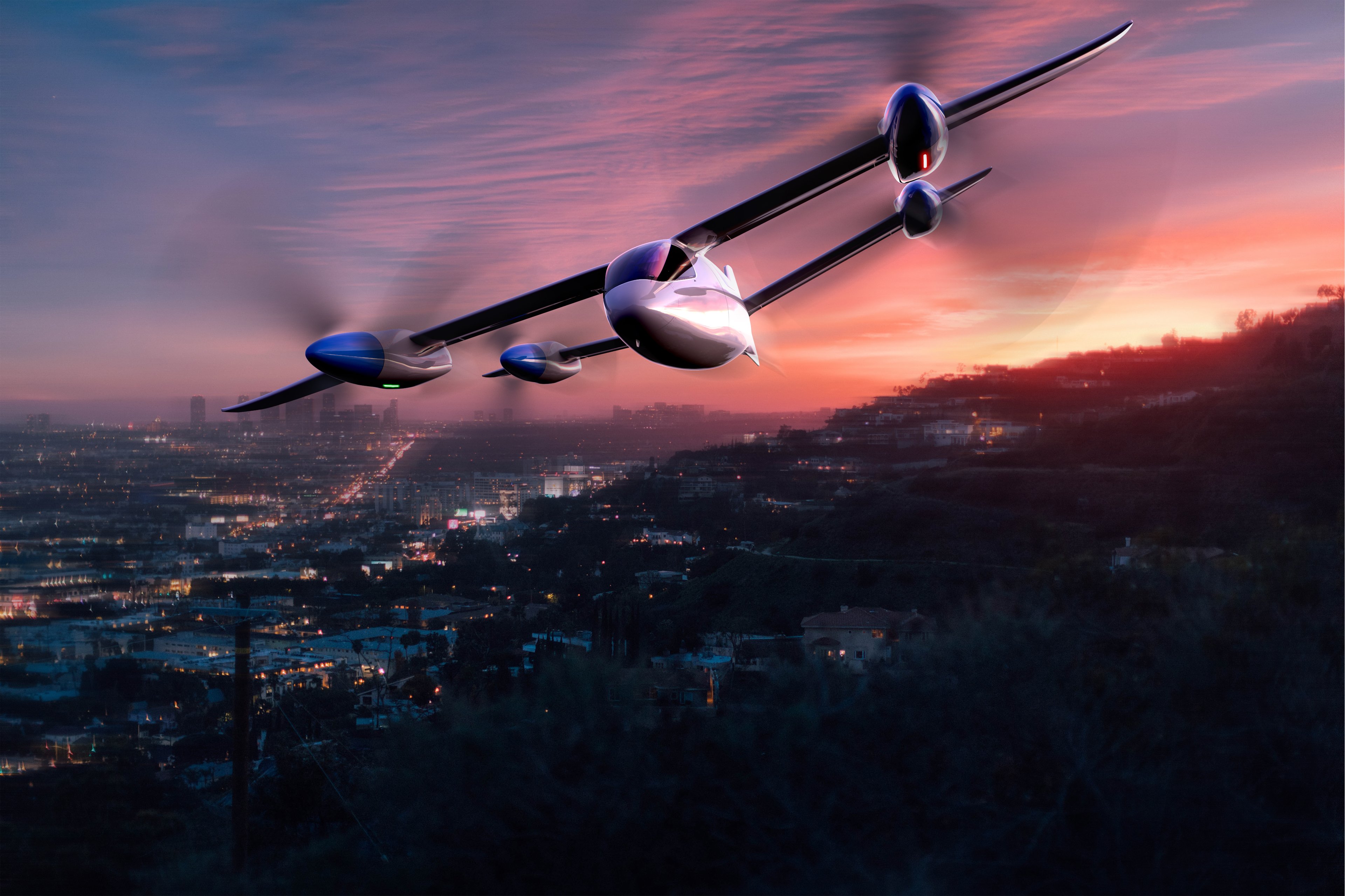Click Here to View This Page on Production Frontend
Click Here to Export Node Content
Click Here to View Printer-Friendly Version (Raw Backend)
Note: front-end display has links to styled print versions.
Content Node ID: 419594
South Korea’s Hanwha Systems has made a further $145 million investment in eVTOL aircraft developer Overair. Announcing the funding on June 14, the California-based start-up said it is on track to start flying a conforming prototype of its six-seat Butterfly model in the second half of 2023.
Hanwha’s aerospace division is supplying electric motors and battery packs for the prototype aircraft, for which Overair aims to achieve type certification by the end of 2025. The group’s investment is also intended to support work to bring the aircraft into commercial service in 2026. The eVTOL is expected to carry up to five passengers or cargo on sectors of over 100 miles and at speeds of 200 mph.
The Butterfly’s performance is based on the patented Optimum Speed Propulsion system developed over the past couple of decades through a sequence of rotorcraft and drone designs developed by company founder Abe Karem. Its four large tilting propellers spin slowly in hover and even slower during cruise flight, which Overair says results in reduced power consumption that boosts payload, as well as safety margins for operating in challenging environmental conditions. The high-aspect-ratio wings have full-span flaps to support low stall speeds.
The large blade area of the propellers, combined with their slow rotation speed and low disk loading, will minimize pressure disturbance, which is also expected to deliver low noise in comparison with both helicopters and other eVTOL designs. According to the company, the noise level at hover (measured at a distance of 100 meters) is estimated at 55 dBA, while at cruise (measured at 500 meters) it should be around 30 dBA.
According to Hanwha Systems CEO Sungchul Eoh, the Seoul-based group is prioritizing investments in what it sees as disruptive technologies. “With regard to our investment decision in Overair, we assessed that the company had the numerous patents and core technologies required to develop a highly efficient low-noise vehicle,” he said. “Therefore, we expected that Overair would be capable of developing a superb vehicle that can satisfy the requirements for safety, efficiency, speed, low noise, and environmentally friendly features.”
Overair’s balance sheet has been further boosted by research and development contracts from both the U.S. Department of Defense and NASA programs. Prospective commercial customers for the aircraft include helicopter operator Bristow.
The company is also working with the Urban Movements Labs collaboration in Los Angeles to develop infrastructure and routes for air taxi services. Earlier this year, it started ground testing the Butterfly's electric propulsion system.
“This is a tremendous milestone for our growing team, and we're extremely well-positioned to deliver sustainable aerial ridesharing to the world through the development of Butterfly," said Overair co-founder and CEO Ben Tigner. "We're exactly where we want to be, building a superior aircraft company with class-leading mobility technology around an unrivaled aircraft while rapidly approaching the first flight of a purpose-built prototype next year. We've proven Butterfly's propulsion system, so we'll now begin validating Butterfly's ability to operate safely in real-world weather conditions, carry significant payloads, and fly incredibly quietly."
